News
SolarCity poised for rapid growth as residential solar installations soar
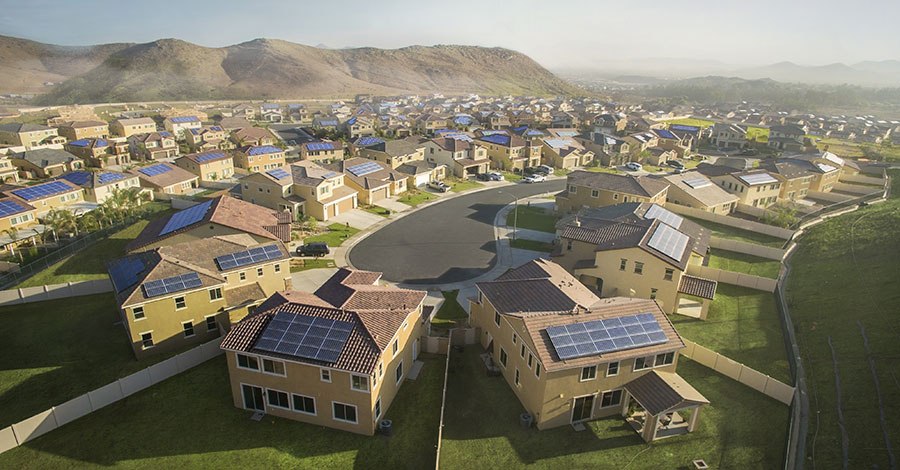
The recent merger of Tesla and SolarCity introduces a new era in residential solar energy generation. With the demand for solar energy in the U.S. rising each year, benefits to both our environment and the nation’s economy increase. The trend toward residential solar installations does require efficient planning and execution of public policies. It also calls for analysis of the status of residential solar in order to move toward an enhanced solar integration across the U.S.
What does residential solar look like today in the U.S.?
Residential solar today is primarily a coastal phenomenon, although more than half of the states have enough residential solar to power at least a few thousand homes. Yet, in the third quarter of 2016, the U.S. surpassed all previous quarterly solar photovoltaic (PV) installation records: 4,143 megawatts (MW), or a rate of one megawatt (MW) every 32 minutes. That pace is even faster today, as the fourth quarter will surpass this past quarter’s historic total, according to the Solar Energies Industry Association (SEIA).
“The solar market now enjoys an economically-winning hand that pays off both financially and environmentally, and American taxpayers have noticed,” Tom Kimbis, SEIA’s interim president, said of the recent rise in residential solar. “With a 90 percent favorability rating and 209,000 plus jobs, the U.S. solar industry has proven that when you combine smart policies with smart 21st century technology, consumers and businesses both benefit.”
Here are the top five U.S. states with residential solar rooftops in September, 2016:
- California: 3,258 MW
- Arizona: 539 MW
- New York: 444 MW
- New Jersey: 386 MW
- Massachusetts: 361 MW
These levels are considered ample to power a significant number of homes in their regions.
What’s the potential for other states to increase residential solar in the near future?
In order to power more than a few thousand homes and to become a major energy source across America, solar saturation must become deeper across existing states and more widespread among states that currently provide limited residential solar. Rooftops provide a large expanse of untapped area for solar energy generation, according to the National Renewable Energy Laboratory (NREL). What’s needed to reduce costs and losses often associated with transmission and distribution of electricity? Onsite distributed generation, such as that which is available from SolarCity and others. Yet, to create a paradigm in which onsite distributed generation can become a reality, different and sometimes dissonant potentials must be addressed.
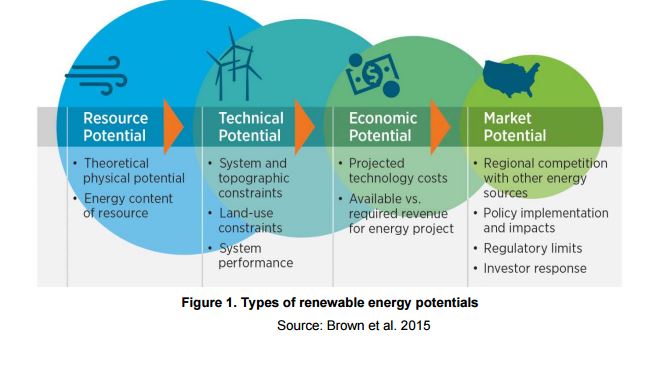 Technical potential considers multiple factors in a given region, such as resource availability and quality, technical system performance, and the physical availability of a suitable area for development. In other words, it measures how much of the total resource can actually be captured. It is often the only area of focus when residential solar is discussed.
Technical potential considers multiple factors in a given region, such as resource availability and quality, technical system performance, and the physical availability of a suitable area for development. In other words, it measures how much of the total resource can actually be captured. It is often the only area of focus when residential solar is discussed.
However, in order for solar to reduce pollution, help homeowners to lower utility bills and gain more energy independence, technical aspects of the larger solar equation must work in sync with resource, economic and market potential.
- Resource potential is the entire amount of energy in a particular form for the region;
- Economic potential is possible generation quantity that results as a positive return on the
investment of constructing the systems; and, - Market potential estimates the quantity of energy expected to be generated from the deployment of a technology into the market. It considers factors such as policies, competition with other technologies, and rate of adoption.
A study from the NREL indicates that, taking into account these four types of potential, there are broad regional trends in both the suitability and electric-generation possibilities of rooftops. Although only 26% of the total rooftop area on small buildings is suitable for PV deployment, the sheer number of buildings in this class gives small buildings the greatest technical potential.
What factors contribute to successful onsite distributed solar generation?
Small building rooftops could accommodate 731 GW of PV capacity and generate 926 TWh of PV energy annually, according to NREL, which represents approximately 65% of the total technical potential of rooftop PV. Think about how much energy could be generated by rooftop solar panels in each state if they were installed on all suitable roofs. Of course, the amount of suitable roof area, which takes into account factors such as shading, roof tilt, roof position, and roof size, must be included in any potential residential solar project planning.
The folks at SolarCity truly believe that, in every state, home rooftop solar could be a major energy resource. With research data backing their conclusions, they feel that U.S. total home solar capacity could increase 100 times over, and each state could meet 10-45% of its electricity needs from residential solar alone.
Add in roofs of medium and large buildings, and the solar integration number rises to 40 percent of all the electric demand in the continental U.S. By comparison, all rooftop solar today combined provides less than 0.5 percent of the nation’s electricity.
The potential for home rooftop solar to become a major energy source is enormous — in every state. And SolarCity argues that, the sooner that homes across the country become a part of that future, the more years they’ll have to enjoy its benefits.
Sources: Solar Energy Industries Association, National Renewable Energy Laboratory, SolarCity
Elon Musk
Elon Musk confirms Grok 4 launch on July 9 with livestream event
The rollout will be accompanied by a livestream at 8 p.m. Pacific Time.
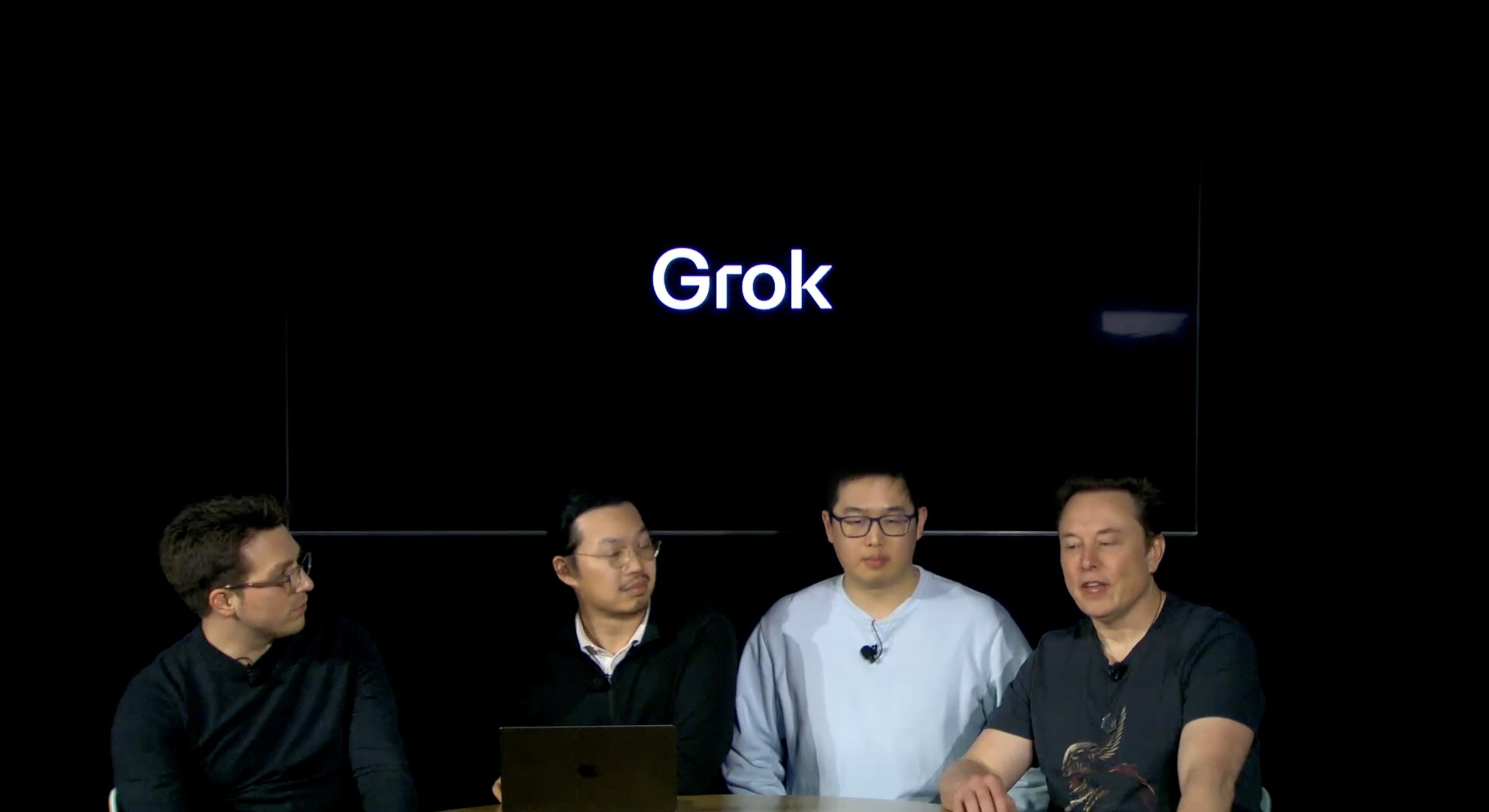
Elon Musk has officially confirmed that Grok 4, the latest version of xAI’s large language model, will launch on July 9. The rollout will be accompanied by a livestream at 8 p.m. Pacific Time, hosted on xAI’s official account on X.
xAI goes straight to Grok 4
Back in May, leaks indicated that xAI was getting ready to ship Grok 3.5. Considering Musk’s recent comments, however, it appears that the artificial intelligence startup would be focusing on the large language model’s fourth iteration instead. As noted in a Financial Express report, users on X have sighted references to Grok 4 in the lead up to the update’s launch, such as “grok-4-prod-mimic” and “Grok 4 Code.”
Musk’s Grok 4 announcement comes as AI competition intensifies between major players including OpenAI, Google, and xAI. With Musk’s Colossus supercomputer fully operational in Memphis, xAI appears to be accelerating its AI product roadmap.
Musk pushes Grok toward political neutrality
Grok 4’s launch also follows a recent controversy involving political bias, as noted in a CNN report. Last week, Grok responded to a user on X stating that political violence in the U.S. since 2016 had come more from the political right than the left. The chatbot noted in a later reply that its answer was based on information from sources like Reuters, the Journal of Democracy, and University of Maryland studies.
Musk stated that Grok’s response was a “major fail.” “Major fail, as this is objectively false. Grok is parroting legacy media. Working on it,” he wrote in a post on X. By the end of June, Musk noted that he was “grinding all night with the xAI team” and that they were making “good progress.” He also stated that the model “Will be called Grok 4. Release just after July 4th. Needs one more big run for a specialized coding model.”
News
Tesla opens massive solar Supercharger station in California
The Supercharger opened to customers ahead of Fourth of July weekend, while Tesla continues phase two of construction on the site.
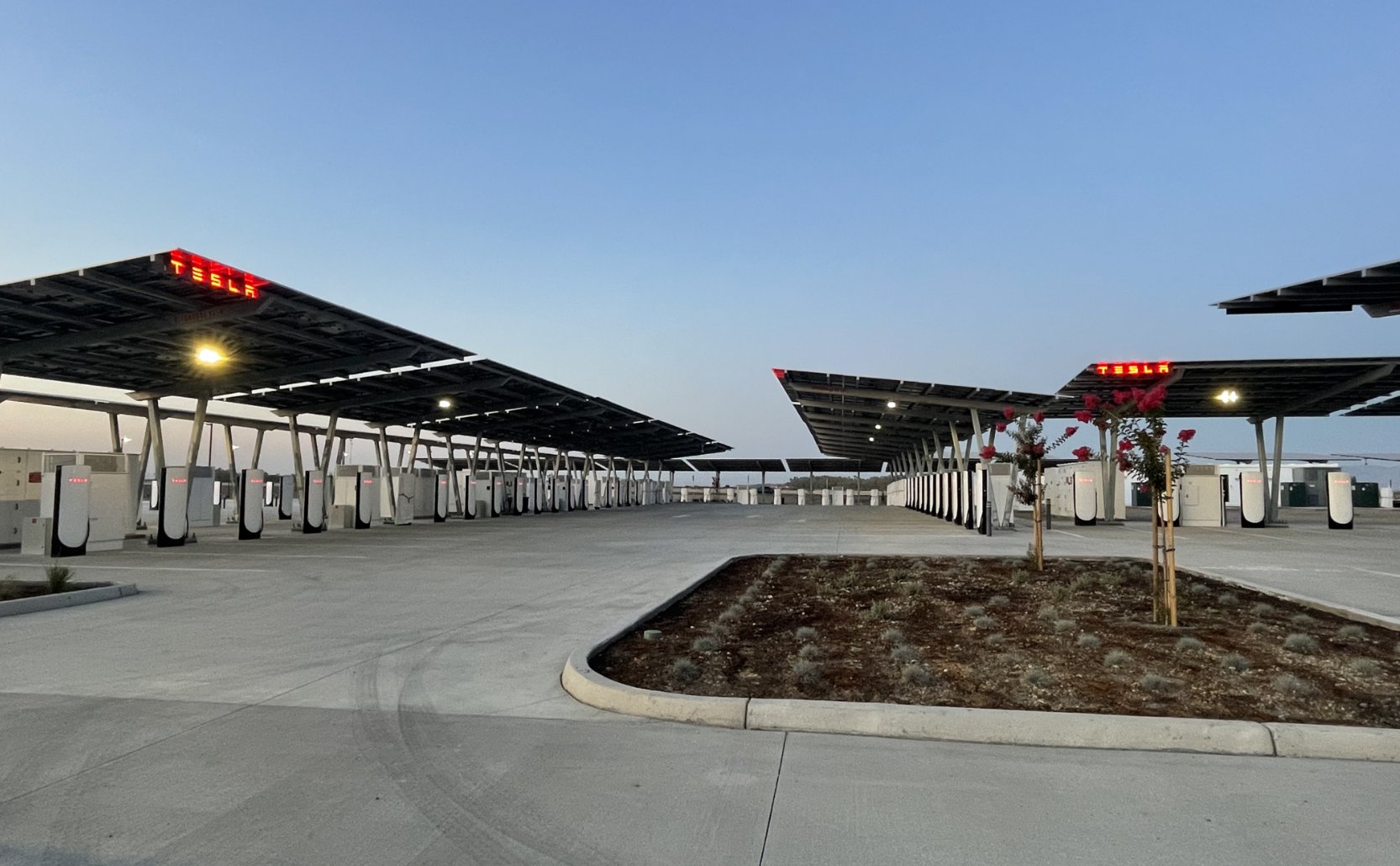
Tesla has officially launched the first several Supercharging posts at a massive station in California, notably including solar canopies and grid-scale batteries to offer completely renewable charging.
Last week, Tesla announced on X that it opened the first 84 Supercharger stalls of a planned 168-stall station in Lost Hills, California. Additionally, the massive Supercharger project features 11MW of solar canopies and 10 Megapack batteries for off-grid charging powered entirely by solar energy.
Tesla completed the first phase of the project just days ahead of the busy Fourth of July holiday weekend, adding that initial construction took just eight months. In addition to the remaining charging stalls, Tesla says it’s building a set of lounge areas, renderings of which can be seen below alongside current photos of the site.
Notably, the site also includes V4 charging posts for the company’s latest available charging speeds, and it’s located near the busy junction between I-5 and Highway 46 in Kern County.
“Thank you [Kern County] and [PG&E] for collaboration and approvals,” Tesla wrote in a follow-up post.
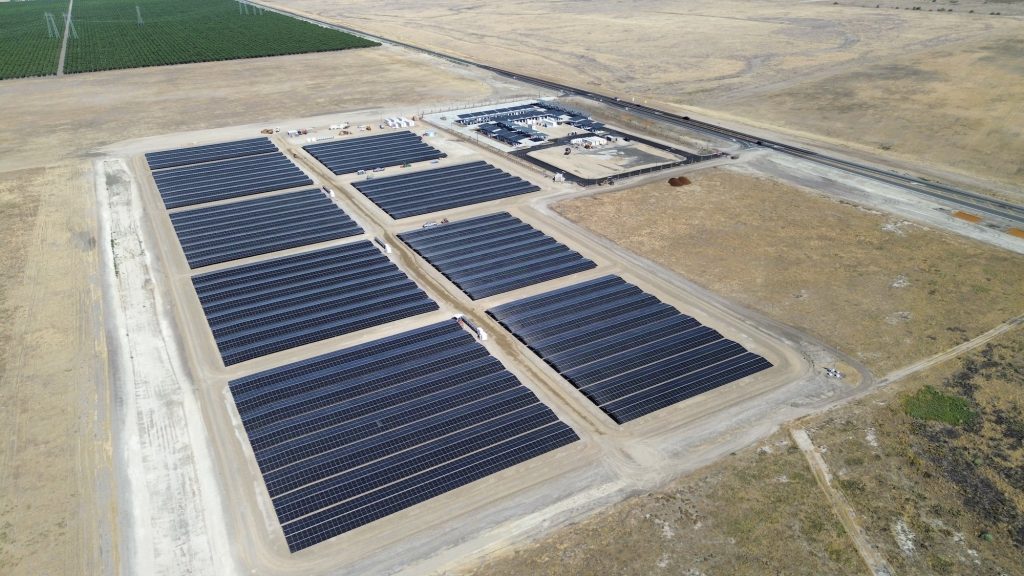
Credit: Tesla Charging | X

Credit: Tesla Charging | X

Credit: Tesla Charging | X
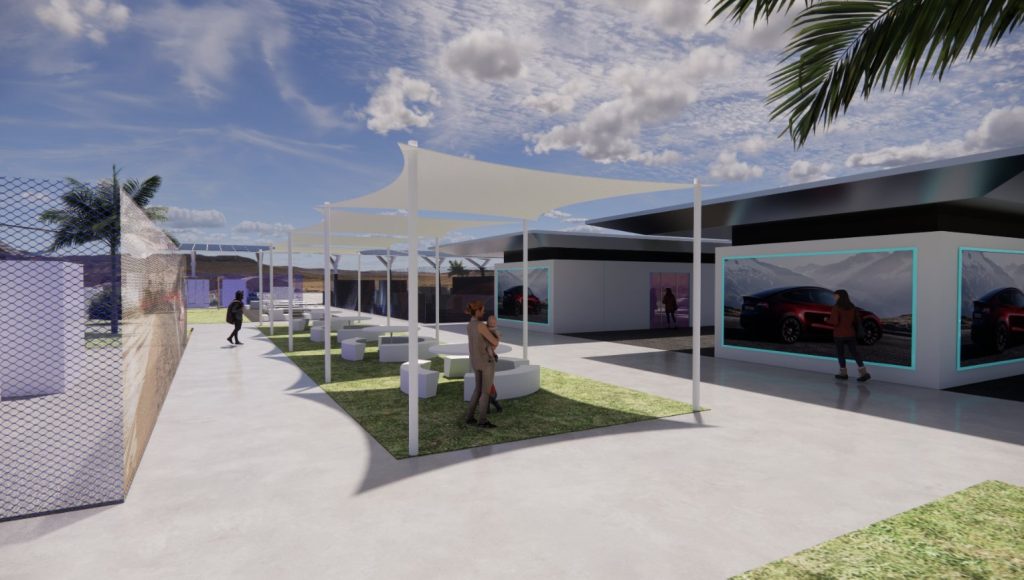
Credit: Tesla Charging | X
Tesla Supercharger Maps for North America, Europe, and Asia pic.twitter.com/0U5r0XRPyo
— TESLARATI (@Teslarati) July 2, 2025
READ MORE ON TESLA SUPERCHARGERS: Tesla launches ultra-fast V4 Superchargers in China for the first time
Testing at the LA Diner, plus Musk update on potential Tesla solar Gigafactory
The huge Tesla Supercharger station completed phase one of construction fairly quickly, especially given how long Tesla has been working on its unique Los Angeles diner, drive-in, and Supercharger location. Still, the company was seen performing some testing at the nearly-completed charging station earlier this month, and will reportedly be holding a job fair.
Elon Musk also responded on Monday morning to a post on X, suggesting that Tesla is “thinking about” building a U.S.-based solar Gigafactory in order to help support increased power needs with AI growth, and to bolster domestic solar production.
Tesla is building a new UFO-inspired Supercharger in the heart of Alien country
News
Tesla driver walks away from major accident with minor injuries
The driver sustained only minor injuries, and the exact cause of the crash remains under investigation.
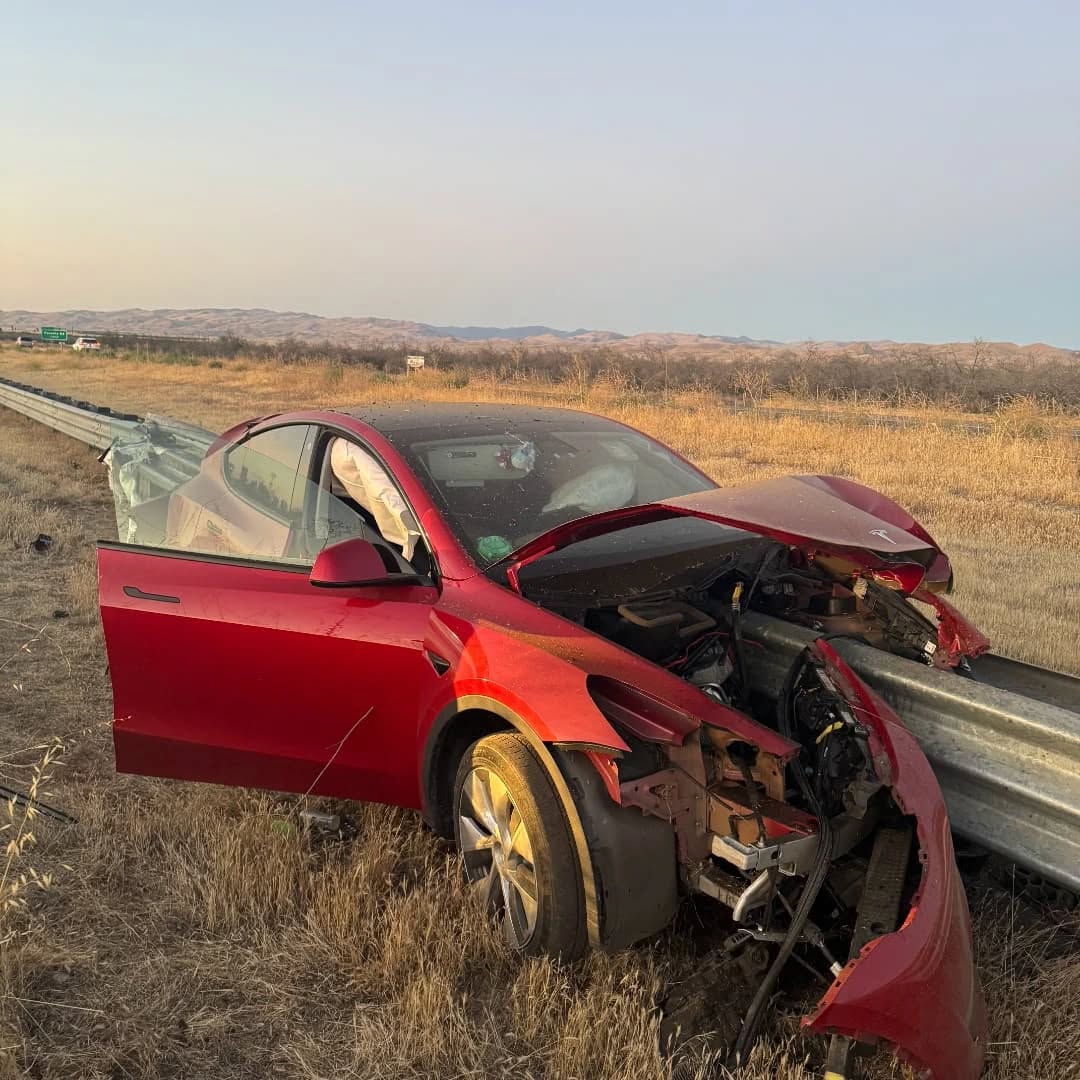
The driver of a Tesla Model Y survived and walked away from a harrowing accident on Monday in California, only sustaining minor injuries despite the vehicle being impaled by a guardrail.
On Monday morning around 4:34 a.m., the Los Banos division of the California Highway Patrol (CHP) responded to the accident on I-5 near Panoche Road, involving a 23-year-old in a Tesla Model Y. According to a post on social media, the driver veered off the road for unknown reasons in the northbound lane, before crashing directly into the guardrail and impaling the vehicle.
You can read the full message and photos from Los Banos CHP below, as were shared in a Facebook post on Monday afternoon.
This morning a Tesla model y was traveling in the #1 northbound lane of I-5 north of Panoche Rd. For unknown reasons driver allowed V-1 to veer off the roadway, travel through a dirt center divide, and crashed into the fixed metal guardrail. Lucky for the driver he only sustained minor injuries and was able to walk away. Driving a vehicle requires 100% attention to the road. Avoid distractions and focus on driving.
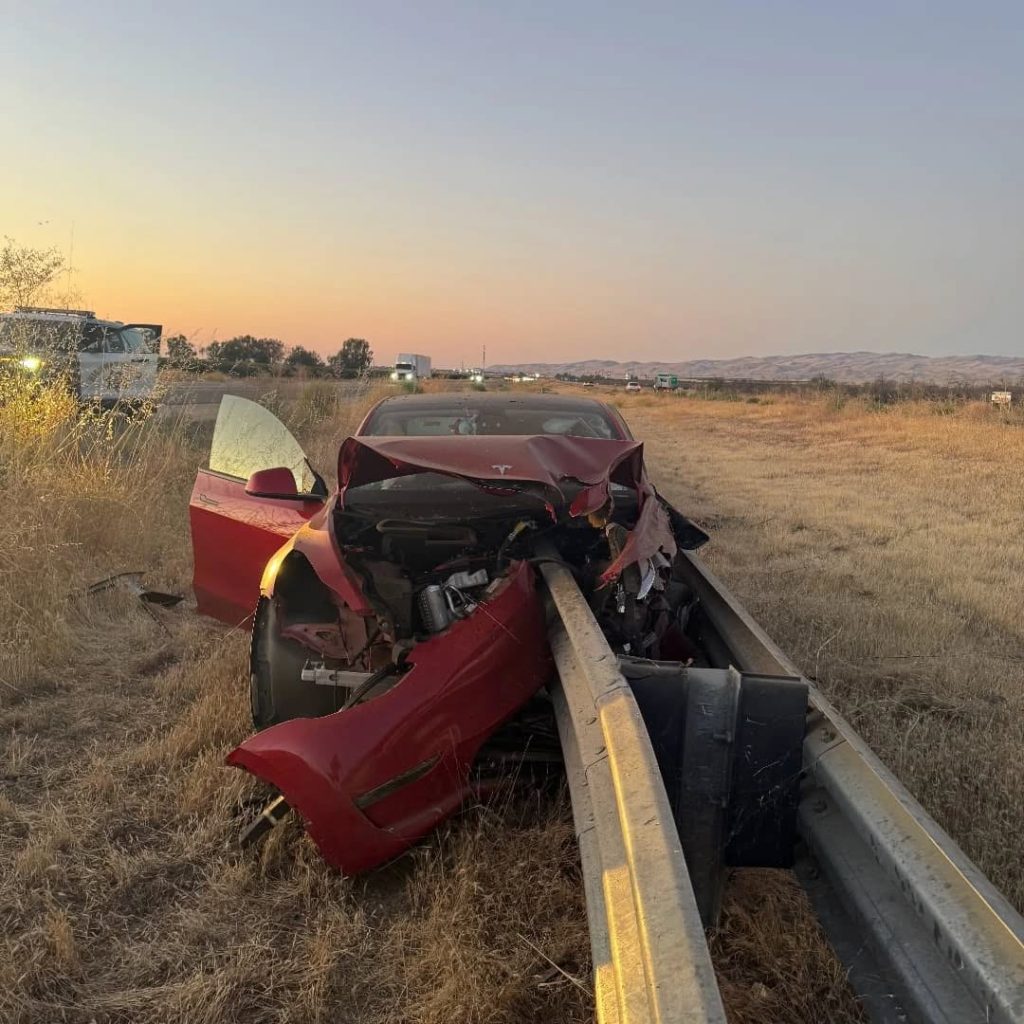
Credit: CHP Los Banos (via Facebook)

Credit: CHP Los Banos (via Facebook)

Credit: CHP Los Banos (via Facebook)
In a statement to SFGate, CHP officer Myles Anderson said that the driver only sustained minor injuries, while no arrests are made and drugs and alcohol are not suspected to have been involved. The report also notes that Tesla’s “cruise control and lane assistance features” were activated, according to Anderson. However, it’s not entirely clear if this is referring to Supervised Full Self-Driving (FSD), or to the cruise control and lane assist features baked into Autopilot.
At the time of writing, CHP has not yet responded to Teslarati’s request for clarification and additional details on the matter.
Tesla Crash Safety Ratings across its lineup: pic.twitter.com/ny30R7ceji
— TESLARATI (@Teslarati) July 1, 2025
READ MORE ON TESLA SAFETY: Tesla rolls out crucial new safety feature aimed at saving children
The news comes after Tesla has touted its vehicles as incredibly safe for many years. In December, for example, the company highlighted receiving top safety scores from regulators on four different continents throughout the world, including from the National Highway Traffic Safety Administration (NHTSA) and the Insurance Institute of Highway Safety (IIHS) in the U.S.
Tesla has also listed the goal of making its vehicles the safest on the road throughout the years, both in the overall design of its vehicles and in its Autopilot and Full Self-Driving (FSD) programs.
Tesla Model 3 ranks as the safest new car in Europe for 2025, per Euro NCAP tests
-

 Elon Musk1 week ago
Elon Musk1 week agoTesla investors will be shocked by Jim Cramer’s latest assessment
-

 News2 weeks ago
News2 weeks agoTesla Robotaxi’s biggest challenge seems to be this one thing
-

 News2 weeks ago
News2 weeks agoWatch the first true Tesla Robotaxi intervention by safety monitor
-

 Elon Musk2 weeks ago
Elon Musk2 weeks agoA Tesla just delivered itself to a customer autonomously, Elon Musk confirms
-

 News2 weeks ago
News2 weeks agoTesla Robotaxi rollout proves that Elon Musk still delivers, even if it’s late
-

 Elon Musk2 weeks ago
Elon Musk2 weeks agoxAI welcomes Memphis pollution results, environmental groups push back
-

 Elon Musk2 weeks ago
Elon Musk2 weeks agoElon Musk commends Tesla team on successful Robotaxi launch
-

 Elon Musk2 weeks ago
Elon Musk2 weeks agoElon Musk confirms Tesla Optimus V3 already uses Grok voice AI




















